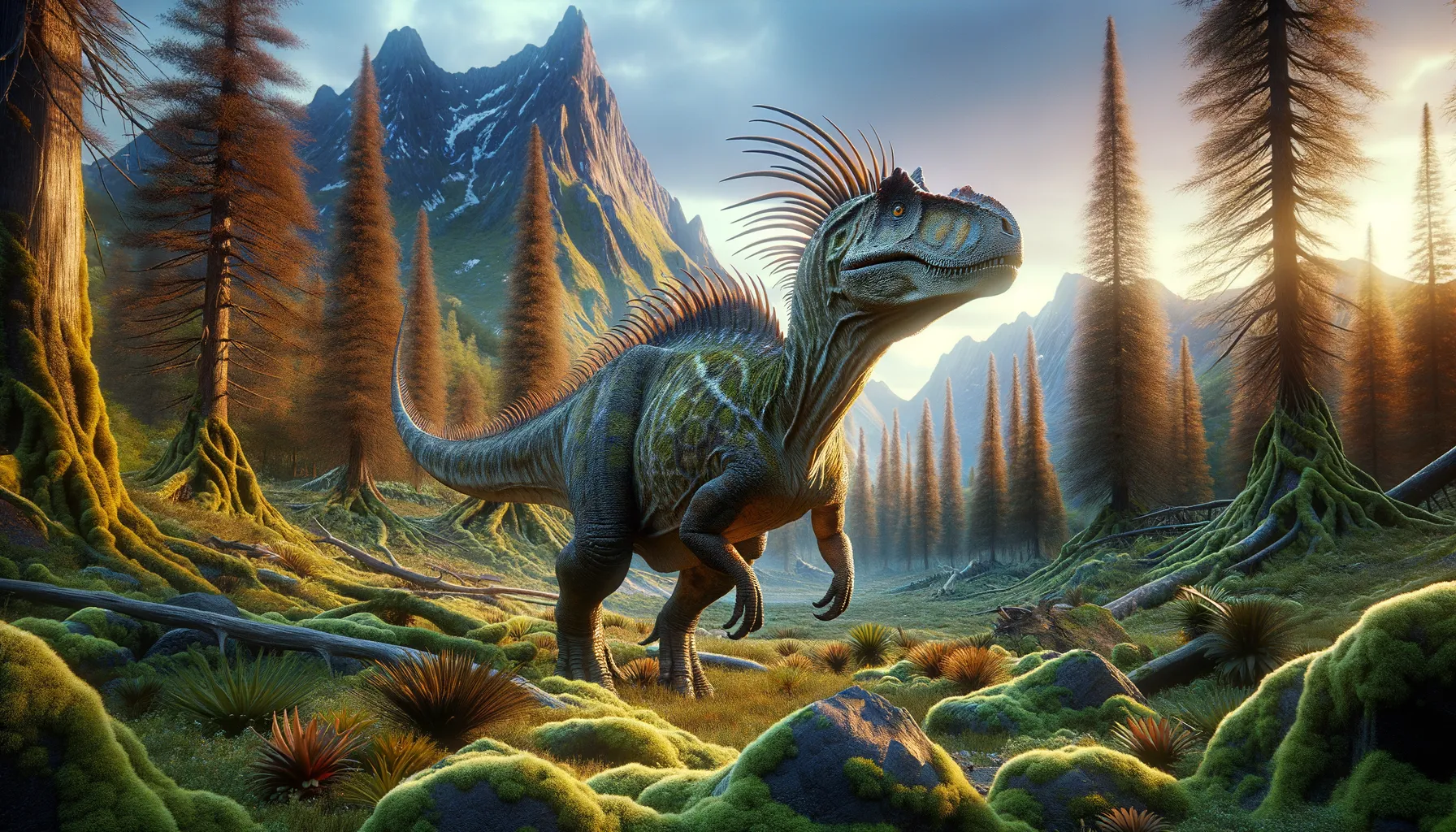
Bugenasaura
Discover the essence of ancient plains life.
Period
Cretaceous
Length
Roughly 4 meters from head to tail.
Height
Approximately 1.5 meters tall at the shoulder.
Weight
Estimated to be around 300 kilograms.
Bugenasaura was a herbivorous dinosaur from the Late Cretaceous period. Known for its moderate build, it roamed in what is now North America. It belongs to the Hypsilophodontidae family, characterized by their strong hind legs suitable for a bipedal stance and grazing on vegetation. Its discovery added valuable insight into the diversity of small herbivorous dinosaurs and their ecological roles during the Cretaceous period.
Diet
Bugenasaura primarily fed on low-lying vegetation. Its diet likely included a variety of ferns, leaves, and possibly fruits or seeds. The shape of its teeth suggests it was well-adapted for browsing and processing plant material efficiently.
Hunting
As a herbivore, Bugenasaura did not hunt for food. Instead, it foraged in its environment, using its strong legs for quick escapes from predators. Its primary focus was finding sufficient plant material to support its diet.
Environmental challenges
Bugenasaura faced challenges such as predators, which included larger carnivorous dinosaurs. Seasonal changes might have affected food availability, necessitating migration or adaptation. Additionally, environmental conditions like droughts or floods would pose survival challenges. Its ability to adapt to these conditions was crucial for its survival in the dynamic ecosystems of the Cretaceous.
Speed
Moderate, not particularly fast or slow.
Lifespan
Estimated around 30 to 40 years.
First discovery
Discovered by paleontologist Jack Horner in the 1990s.
Fun Facts
- Bugenasaura was a small herbivorous dinosaur that lived during the Late Cretaceous period.
- It is believed to have had a beak-like mouth, perfect for munching on vegetation.
- Bugenasaura was about the size of a modern house cat, making it one of the smaller dinosaurs.
- Fossils of Bugenasaura have been found in North America, particularly in South Dakota.
- This dinosaur's name means 'big-nosed lizard,' which comes from the shape of its snout.
- Bugenasaura likely moved on two legs and was part of the ornithopod family.
- Although not much is known about it, some scientists think Bugenasaura might have lived in herds for protection.
Growth and Development
Bugenasaura underwent significant growth from hatchling to adult, growing rapidly to avoid predator threats. Juveniles would likely stay within safe herd environments, learning survival techniques early on. Their development might have been marked by changes in diet and habitat preferences as they matured. Fossil records suggest a distinct difference in size between young and fully-grown individuals.
Habitat
Bugenasaura inhabited regions with abundant vegetation, such as forests or plains. It thrived in mild climatic conditions that supported diverse plant life. Its preferred habitats provided both ample food resources and protection from predators. Seasonal changes could have influenced its movement across different areas, ensuring its survival and reproduction.
Interaction with other species
Bugenasaura likely coexisted with various other herbivorous and carnivorous dinosaurs. It maintained a cautious stance towards predators to avoid becoming prey. Symbiotic relationships with other herbivores could have included shared grazing grounds. Its existence also influenced the ecological balance by contributing to the vegetation cycle through its feeding habits.
Natural lifespan
Bugenasaura's natural lifespan was likely about 30 to 40 years.
Reproduction
Bugenasaura likely used oviparous reproduction, laying eggs in secure nests. Parental care might have included nest protection and ensuring young had access to safe grazing areas. Hatchlings probably faced significant predation threats, prompting rapid growth and development. Evidence from fossilized nests provides insight into their reproductive behaviors.
Social behaviour
Bugenasaura might have displayed social behavior by roaming in herds, which provided safety in numbers against predators. Herds enabled better resource location and environmental adaptation. Social interactions could have included vocalizations or physical gestures for communication. This social structure played a role in increasing their survival rates.
Fossil locations
Bugenasaura fossils have been primarily discovered in North America. Remains found in Montana and related regions have provided significant insights. These fossil sites reveal the geographical range of Bugenasaura during the Cretaceous period. The stratigraphy of these locations aids in understanding their habitat preferences and adaptations.
